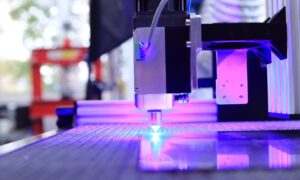Have you ever wondered what machine is used to make blocks?
The process of block manufacturing involves intricate machinery that plays a crucial role in creating durable and versatile building materials.
Understanding the significance of the block machine is essential for anyone involved in construction projects, as it directly impacts the quality and efficiency of block production.
Stay tuned to explore the different types of machines available, their components, and the factors that influence the selection of the most suitable machine for specific block-making needs.
Key Takeaways:
- Block making machines use precision, efficiency, and versatility for uniform and quality block production.
- Various types of machines cater to different block shapes, sizes, and production capacities.
- Key components like the hopper, mold, and hydraulic system work together for efficient block manufacturing.
- Factors like production capacity, block types, space availability, automation level, and manufacturer influence machine selection.
Block Manufacturing Process Overview
Curious about how blocks are manufactured efficiently? The block manufacturing process begins with the raw materials, typically a mixture of cement, sand, and water. These ingredients are carefully measured and mixed to form a homogeneous mixture. Once the mixture is ready, it’s transferred to the block making machine.
Within the block making machine, the mixture is compacted into a mold to give it the desired shape and size. The machine applies pressure to the mixture, ensuring that it’s compressed and formed correctly. Depending on the type of blocks being made, the machine may also vibrate to further compact the mixture and remove any air bubbles.
After the blocks are molded, they’re removed from the machine and left to cure. Curing is a crucial step in the manufacturing process as it allows the blocks to gain strength and durability. The curing time can vary depending on factors such as the type of blocks and environmental conditions.
Importance of Block Making Machine
The block making machine plays a crucial role in efficiently transforming the carefully mixed raw materials into molded blocks of the desired shape and size. This machine is essential for the block manufacturing process, as it automates and streamlines the production of blocks, ensuring consistency and quality in the final product. Without this machine, the process would be labor-intensive, time-consuming, and prone to human error.
- Precision: The block making machine ensures precise measurements and uniformity in block production, leading to consistent quality across all blocks.
- Efficiency: By automating the block manufacturing process, the machine significantly increases production rates and reduces labor costs.
- Versatility: Block making machines can be adjusted to produce different types, sizes, and shapes of blocks, providing flexibility for various construction needs.
Types of Machines for Block Production
When considering block production, various types of machines are employed to meet different construction requirements. One common machine is the concrete block making machine, which can produce blocks in various sizes and shapes by using different molds. These machines are versatile and can produce both hollow and solid blocks, making them suitable for a wide range of construction projects.
Another type of machine used for block production is the automatic block making machine. This type of machine is highly efficient and can produce a large number of blocks in a short amount of time. It’s ideal for large-scale projects where a high volume of blocks is required.
In addition to concrete and automatic block making machines, there are also specialized machines for producing specific types of blocks, such as interlocking blocks or paving blocks. These machines are designed to meet the unique requirements of these block types, ensuring precise and consistent results.
Key Components of Block Making Machine
To understand the functionality of a block making machine, it’s essential to grasp the key components that play a crucial role in the block production process. These components work together seamlessly to create the desired end product efficiently.
Here are three key components of a block making machine:
- Hopper: The hopper is where the raw materials such as cement, sand, and aggregate are poured for mixing. It feeds the materials into the machine in controlled amounts, ensuring uniform block quality.
- Mold: The mold is a crucial component that shapes the concrete mixture into the desired block size and shape. It determines the final product’s dimensions and appearance.
- Hydraulic System: The hydraulic system is responsible for providing the necessary pressure to compact the concrete mix within the mold. It ensures proper consolidation of the materials, leading to strong and durable blocks.
Understanding how these components work together is essential for operating a block making machine efficiently and producing high-quality blocks consistently.
Factors Influencing Machine Selection
Considering your production needs and budget constraints, evaluating the factors that influence the selection of a block making machine is crucial for optimal efficiency.
Firstly, production capacity is a key factor. Determine the volume of blocks required within a specific timeframe to match your demand.
Secondly, the types of blocks you intend to produce impact machine selection. Different machines cater to various block types like interlocking, hollow, or paving blocks.
Thirdly, consider the available space for installation and operation. Ensure the machine fits in your workspace without causing hindrances.
Additionally, the level of automation needed influences your choice. Fully automatic machines offer higher productivity but come at a higher cost compared to semi-automatic ones.
Moreover, the quality and reliability of the machine manufacturer play a significant role. Research and select a reputable manufacturer known for durable and efficient block making machines.
Lastly, maintenance requirements and after-sales support should be factored in to ensure smooth operations and maximum uptime of the machine.
Frequently Asked Questions
How Much Space Is Needed to Operate a Block Making Machine?
To operate a block making machine, you’ll need enough space for the machine to run smoothly. Make sure there’s ample room for loading materials, moving the blocks, and conducting maintenance. Adequate space is key for efficiency.
What Safety Precautions Should Be Taken When Using a Block Making Machine?
When using a block making machine, ensure safety by wearing protective gear, following operating instructions carefully, keeping hands clear of moving parts, and never tampering with the machine while it’s in operation to prevent accidents.
Can Different Types of Blocks Be Made Using the Same Machine?
Yes, you can make different types of blocks using the same machine. It offers versatility and efficiency. Ensure you follow manufacturer guidelines and adjust settings accordingly for varying block types to achieve optimal results.
Are There Any Environmental Considerations to Take Into Account When Using a Block Making Machine?
When making blocks, you should consider environmental impact. Opt for eco-friendly materials and efficient machines. Choose a block making machine that minimizes waste and energy consumption, helping you contribute positively to the environment.
How Long Does It Typically Take to Learn How to Operate a Block Making Machine Effectively?
To operate a block making machine effectively, it usually takes a few weeks of consistent practice. Focus on understanding the machine’s functions, safety measures, and production process. With dedication, you’ll soon master its operation.



































